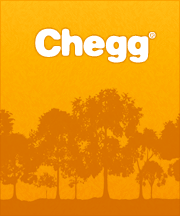Question
1. Rosie Company has two divisions, Division A and Division B. Rosie Company has been using a traditional overhead allocation technique based on direct labor
1.
Rosie Company has two divisions, Division A and Division B. Rosie Company has been using a traditional overhead allocation technique based on direct labor hours. For the most recent year, the predetermined overhead rate was $40 per direct labor hour. All of Rosie Company's products are sold in competitive markets. An activity-based costing analysis of Rosie's operations has identified three different cost drivers. Data about the cost drivers for the most recent year are given below:
| Cost Drivers | Number of events per year | Cost pool |
| X | 1,000 | $100,000 |
| Y | 500 | 75,000 |
| Z | 20 | 60,000 |
| Total | $235,000 |
The following data relate to cost driver event activity within the two divisions during the most recent year:
| Division A | Division B | Total | |
| Cost Driver X events | 600 | 400 | 1,000 |
| Cost Driver Y events | 200 | 300 | 500 |
| Cost Driver Z event | 15 | 5 | 20 |
| Direct Labor Hours | 5,000 | 875 | 5,875 |
Which ONE of the following statements is MOST CORRECT?
If the activity-based costing system had been used in the most recent year in place of the traditional overhead allocation technique, profit for Division B would have increased by $100,000.
If the activity-based costing system had been used in the most recent year in place of the traditional overhead allocation technique, profit for Division A would have increased by $100,000.
If the activity-based costing system had been used in the most recent year in place of the traditional overhead allocation technique, profit for Division B would have increased by $35,000.
If the activity-based costing system had been used in the most recent year in place of the traditional overhead allocation technique, the number of direct labor hours worked would have been reduced to 5,000 from 5,875.
Using the traditional overhead allocation technique, Division B profits have been understated and Division A profits have been overstated.
If the activity-based costing system had been used in the most recent year in place of the traditional overhead allocation technique, profit for Division A would have increased by $35,000.
If the activity-based costing system had been used in the most recent year in place of the traditional overhead allocation technique, total net income for Rosie Company would have been the same.
2.
Didericksen Company is a manufacturer with a process costing system. Didericksen's ending work-in-process inventory information for the past three years is as follows:
| Year 1 | Year 2 | Year 3 | |
| Number of physical units | 1,000 | ?????? | ?????? |
| Percent completed with respect to direct materials | 100% | 100% | 100% |
| Percent completed with respect to conversion cost | 30% | 75% | 40% |
| In addition, the following information relates to production activity during the three years. | |||
| Year 1 | Year 2 | Year 3 | |
| Number of physical units started and completed | 5,000 | 5,000 | 5,000 |
| Equivalent units of production (in terms of conversion cost) | 5,820 | 6,825 | 6,055 |
Compute Didericksen Company's ending work-in-process inventory (in terms of number of units) for Year 2 and for Year 3. Note: The conversion cost completion percentages are for ending work-in-process inventory in the year indicated.
Year 2 1,536 physical units; Year 3 1,367 physical units
Year 2 1,500 physical units; Year 3 175 physical units
Year 2 2,033 physical units; Year 3 1,700 physical units
Year 2 2,033 physical units; Year 3 1,367 physical units
Year 2 6,100 physical units; Year 3 1,175 physical units
Year 2 1,500 physical units; Year 3 1,700 physical units
Year 2 4,500 physical units; Year 3 175 physical units
Year 2 1,536 physical units; Year 3 1,678 physical units
3.
Solar Salt Company has two divisions. Sales, direct materials cost, and direct labor cost data for Solar Salt's two divisions are not available. However, manufacturing overhead and gross profit data for the two divisions are available, as follows:
| Agricultural Products | Retail Products | |
| Manufacturing overhead* | $450,000 | $250,000 |
| Gross profit | 150,000 | 100,000 |
*Manufacturing overhead is allocated to production based on the amount of direct labor cost. Solar Salt has determined that its total manufacturing overhead cost of $700,000 is a mixture of unit-level costs, batch-level costs, and product line costs. Solar Salt has assembled the following information concerning the manufacturing overhead costs, the annual number of units produced, production batches, and number of product lines in each division:
| Total Manufacturing Overhead Costs | Agricultural Products | Retail Products | |
| Unit-level overhead | $210,000 | 7,500 | 13,500 |
| Batch-level overhead | 280,000 | 50 batches | 90 batches |
| Product line overhead | 210,000 | 10 lines | 18 lines |
| $700,000 |
How much will GROSS PROFIT in each of the divisions be if Solar Salt adopts an activity-based costing system?
Agricultural, $350,000; Retail, $100,000
Agricultural, $350,000; Retail, loss of $100,000
Agricultural, $350,000; Retail, $300,000
Agricultural, loss of $50,000; Retail, loss of $100,000
Agricultural, $50,000; Retail, $200,000
Agricultural, $150,000; Retail, $100,000
Agricultural, $250,000; Retail, $450,000
Agricultural, loss of $50,000; Retail, $300,000
Step by Step Solution
There are 3 Steps involved in it
Step: 1

Get Instant Access to Expert-Tailored Solutions
See step-by-step solutions with expert insights and AI powered tools for academic success
Step: 2

Step: 3

Ace Your Homework with AI
Get the answers you need in no time with our AI-driven, step-by-step assistance
Get Started


